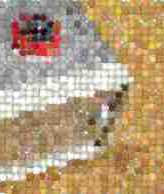
GPS FAQ
This page contains answers to frequently asked questions about our GPS products
and about timestamping in general
For a list of questions in other categories,
return to the main
FAQ Index
page
If you still have questions after reading this page,
Contact Us
and we'll be glad to help
Q: What do abbreviations like GPS, PPS, NMEA mean ?
Like all electronics GPS has its array of acronyms and abbreviations:
GPS: The Global Positioning System using a collection of
orbiting satellites to determine time and location at ground based receivers.
PPS: The Pulse Per Second mark is an electrical signal with
its leading edge indicating the beginning of a second to sub-microsecond
accuracy as determined by the GPS satellites. Although it synchronizes
when the global second starts, it gives no indication of WHICH second is
starting. That information is carried in the NMEA message strings.
NMEA: The National Marine Electronics Association has defined
a set of standard RS232 ASCII message strings used to indicate location and
coarse YMDHMS time. Most GPS receivers output a subset of the possible
NMEA strings in RS232 serial format.
YMDHMS: ( year, month, day, hour, minute, seconds ) in various
NMEA formats. This is often called "coarse" time, with the seconds only
measuring the current second, but no finer. The PPS signal must be used
to determine the exact start of the second tick. The antenna MUST emit
the coarse YMDHMS time between PPS ticks so they can be correlated. Low
quality antennas may not and their time may be off by integer seconds.
Q: What GPS antennas can I use with your products ?
SR products use GPS antennas with the PPS signal and RS232 NMEA strings. This
configuration is common with "hockey puck" antennas from companies like Garmin
and Trimble. We recommend configuring your antenna to output the GGA, and RMC
or ZDA NMEA string messages.
Our GPS page lists the antennas and
accessories we carry. It also shows the appropriate A/D for each item.
See the USBxCH PDF User Manual for detailed information about using GPS
with those products.
Q: Can I use GPS in my basement ?
Ideally GPS antennas should have a sky view "line of sight" visibility to at
least four satellites. Progress has been made in recent years, relaxing this
requirement in some situations. For example, it is likely a GPS puck antenna
will work inside a field box. Operation from a basement or inside a building
is still optimistic.
For locations with no access to GPS reception, we recommend using TCXO time
stamping with products like the USBxCH. If you only need relative time, simply
count A/D samples as measured by the TCXO clock. The PcTime option which
all of our products support is also an option. However, this assumes the PC
clock is set correctly by other means and is unlikely to be as accurate as GPS.
Q: What if the antenna cable is too short to reach the window ?
With hockey puck style antennas, the signals on the GPS cable are generally the
PPS tick and RS232 strings, and not high frequency RF from the antenna core
itself. Inexpensive standard multiconductor cable can be used to connect the
puck to equipment like the USBxCH. Runs of several hundred feet are acceptable
if needed to place an antenna in a window or on the roof.
For the USBxCH systems use an inexpensive RS232 DB9MF ( male-female ) extension
cables. Expensive RF coax is NOT required.
Q: Why is my GPS giving 19 year old dates ?
Your antenna is not compensating for the "Week Number Roll Over" (WNRO) which
occured on the GPS network on April 6, 2019.
At development time the GPS designers decided to store time as a 10-bit week
number plus seconds within that week. Of course after 1024 weeks or roughly
19.5 years, the week number overflows and wraps back to zero! This has now
happened twice since GPS time started on January 6th of 1980 ...
Luckily only the date is affected. The hours:minutes:seconds part of
the time is still correct and unchanged.
Software is expected to deal with the date problem when the wrap occurs. This
correction can be performed in the antenna firmware or in the USBxCH post
processing programs. Basically it just involves adding 619315200 seconds (the
number in 1024 weeks) to the date. Implementing the firmware update method is
discussed in the ReadMe.txt file in the Garmin subdirectory of the USBXCH/Docs
directory. Details on implementing the USBxCH post processing method are
available by running Pak2Bin /i and reading about the CorrectWNRO parameter.
Return to the
FAQ Index
for links to more answers